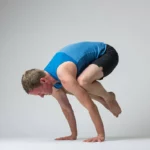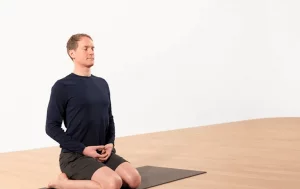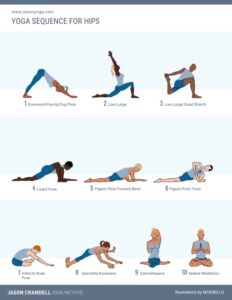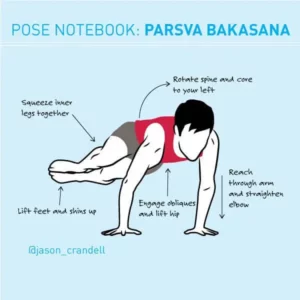Long before photos of Handstand ruled the social media kingdom, Astavakrasana was king of the hill. Teachers would get one or two photos of themselves every few years to adorn their bios and show aptitude in their flyers.
There were 3 distinctly different looks that teachers would cast while being photographed in the pose: 1) a joyous smile that gave the look and feel of a yogi’s Senior Picture, 2) a far-off gaze that implied the teacher was being caught in their natural habitat, and 3) the somewhat surly (my favorite) mug that proved the teacher was not being photographed for their Senior Picture.
Astavakrasana is no longer as ubiquitous, but it’s still a great pose. It strengthens the upper body as well as the rotational muscles of the core. If you do it correctly, the pose also strengthens the adductors and outer hips. Plus, it still looks great on flyers.
See also Yoga Podcast: A Strategic Approach to Arm Balances and Inversions
Like all the postures I breakdown on my blog, Astavakrasana has many layers. Many of the cues I use for the pose are featured in the illustration. But, there are three quick tips that I want to give you.
These are the most common elements of the posture I’ve found myself troubleshooting for my students over the last 20 years.
3 Tips for Astavakrasana
1. Placement of the hands
The most common error that students make when they practice Astavakrasana is placing their hands too close to their hips when setting up for the pose. I’m not talking about the width of the hands from each other. I’m talking about the proximity of the hands to the hips. You need to be able to lean forward into your hands in order to bend your elbows and lift your hips. This is not possible if your hands are too close to your hips.
When you set up for the pose, set your hands about a foot forward of your hips. This way, you can lean forward into your hands. This will make bending your elbows and lifting your hips much more accessible.
2. The Outside Elbow
Get. It. In. The outside elbow likes to drift outward. But, this often leads to the outside shoulder dropping too low. When the outside shoulder drops low, it can easily put excess stress on the socket.
In order to help avoid this—and, provide your body with greater stability from your arms—hug your top elbow towards the ribs. It’s okay to set your hand a little wider than your shoulders, but be sure to hug your outside elbow in rather than allowing it to bow out.
3. The Often Overlooked Twist
When we practice arm balances, it’s easy to overlook their subtleties. In Astavakrasana, it’s common for students to forget that one of the posture’s defining element’s is spinal rotation. We get so focused on the hand-balancing element, that we omit the action of twisting. So, don’t drop the ball next time you practice Astavakrasana. Remember to use the squeeze of your legs, press of your hands, and action of your core to maximize your twist.
See also The Expert’s Guide to Chaturanga, Part I
{illustration by MCKIBILLO}





